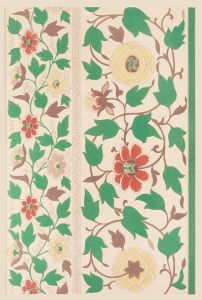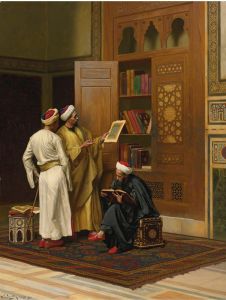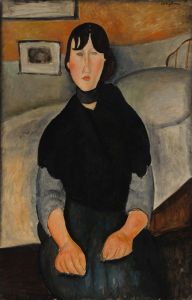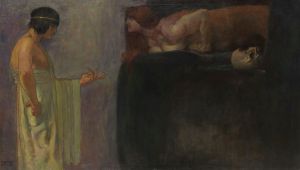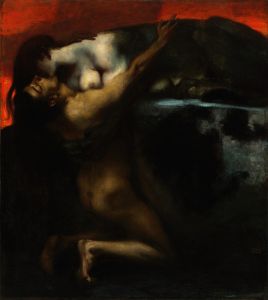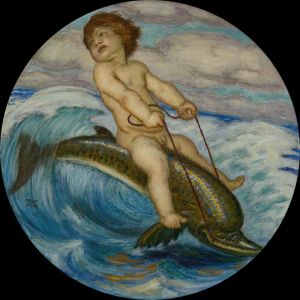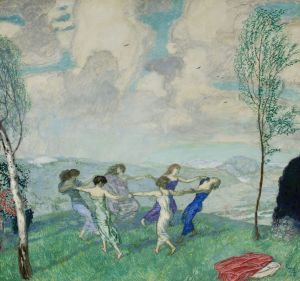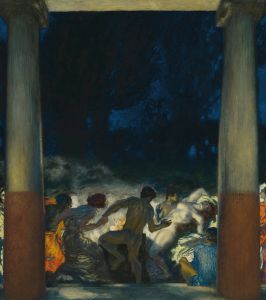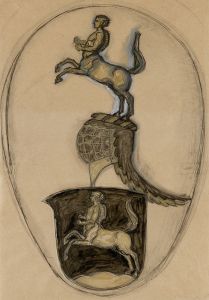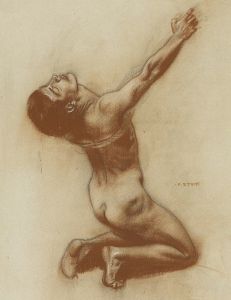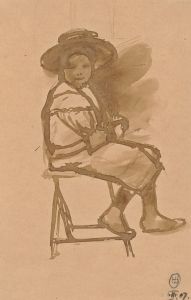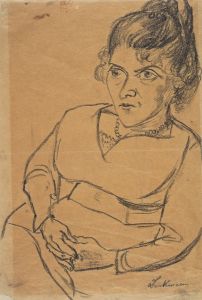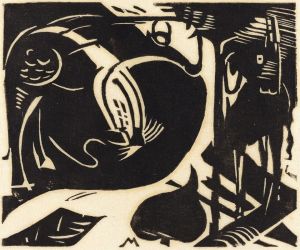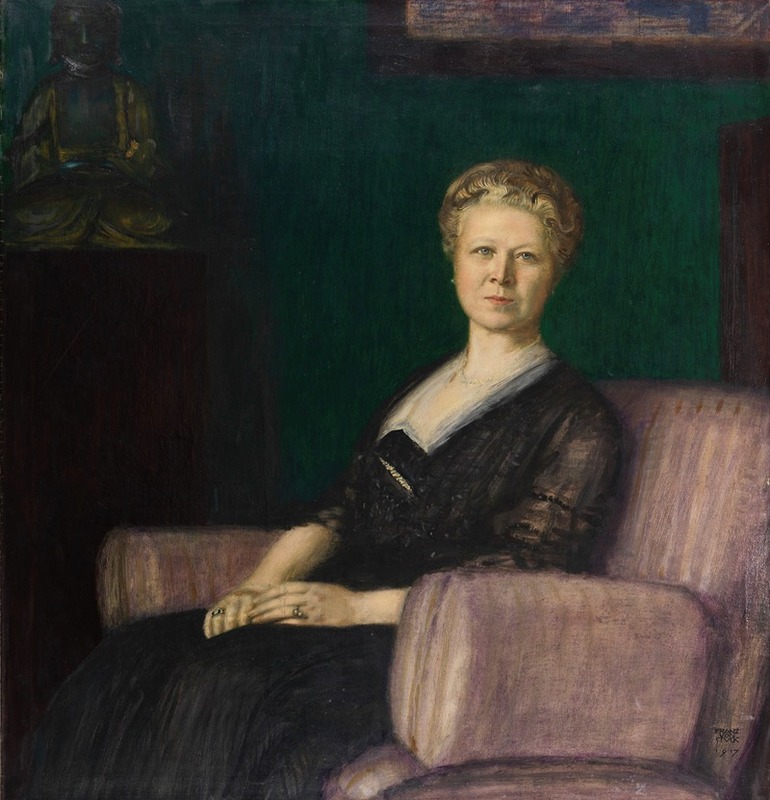
Porträt Luise Bestehorn
A hand-painted replica of Franz von Stuck’s masterpiece Porträt Luise Bestehorn, meticulously crafted by professional artists to capture the true essence of the original. Each piece is created with museum-quality canvas and rare mineral pigments, carefully painted by experienced artists with delicate brushstrokes and rich, layered colors to perfectly recreate the texture of the original artwork. Unlike machine-printed reproductions, this hand-painted version brings the painting to life, infused with the artist’s emotions and skill in every stroke. Whether for personal collection or home decoration, it instantly elevates the artistic atmosphere of any space.
Franz von Stuck was a prominent German painter, sculptor, and printmaker, known for his role in the Symbolist movement and as a founding member of the Munich Secession. One of his works, "Porträt Luise Bestehorn," exemplifies his skill in portraiture and his ability to capture the essence of his subjects with a distinctive style that blends realism with symbolic elements.
Franz von Stuck was born on February 23, 1863, in Tettenweis, Bavaria. He showed an early interest in art and went on to study at the Munich Academy of Fine Arts. Stuck gained recognition for his mythological and allegorical paintings, which often featured dramatic lighting and a strong sense of mood. His work was characterized by a fascination with themes of sensuality, power, and the supernatural, which were common in the Symbolist movement.
"Porträt Luise Bestehorn" is a portrait of Luise Bestehorn, a member of a prominent family in Germany. The painting reflects Stuck's ability to convey the personality and status of his sitters through his use of color, composition, and attention to detail. While specific details about the commission or the context of the painting are limited, it is known that Stuck's portraits were highly sought after by the upper echelons of society, who appreciated his ability to imbue his subjects with a sense of elegance and sophistication.
Stuck's portraits often feature a dark, rich palette, with a focus on the interplay of light and shadow to create depth and dimension. In "Porträt Luise Bestehorn," this technique is likely employed to highlight the features of the sitter, drawing attention to her expression and attire. The background of Stuck's portraits is typically understated, allowing the viewer to focus entirely on the subject.
Throughout his career, Franz von Stuck received numerous accolades for his contributions to the art world. He was appointed a professor at the Munich Academy of Fine Arts in 1895, where he influenced a generation of artists, including notable figures such as Paul Klee and Wassily Kandinsky. Stuck's impact on the art world extended beyond his teaching; his work was exhibited internationally, and he was awarded several prestigious honors, including the Knight's Cross of the Order of Merit of the Bavarian Crown.
Stuck's legacy is evident in the continued appreciation of his work, both in Germany and internationally. His ability to blend realism with symbolic elements has ensured that his paintings remain relevant and admired by art enthusiasts and scholars alike. "Porträt Luise Bestehorn," like many of his portraits, serves as a testament to his skill and his unique approach to capturing the human spirit.
While specific information about "Porträt Luise Bestehorn" may be limited, the painting is a part of Franz von Stuck's broader body of work, which continues to be studied and celebrated for its artistic merit and its reflection of the cultural and social dynamics of the time. Stuck's portraits, including this one, offer a glimpse into the world of late 19th and early 20th-century Europe, providing insight into the individuals who shaped that era.






